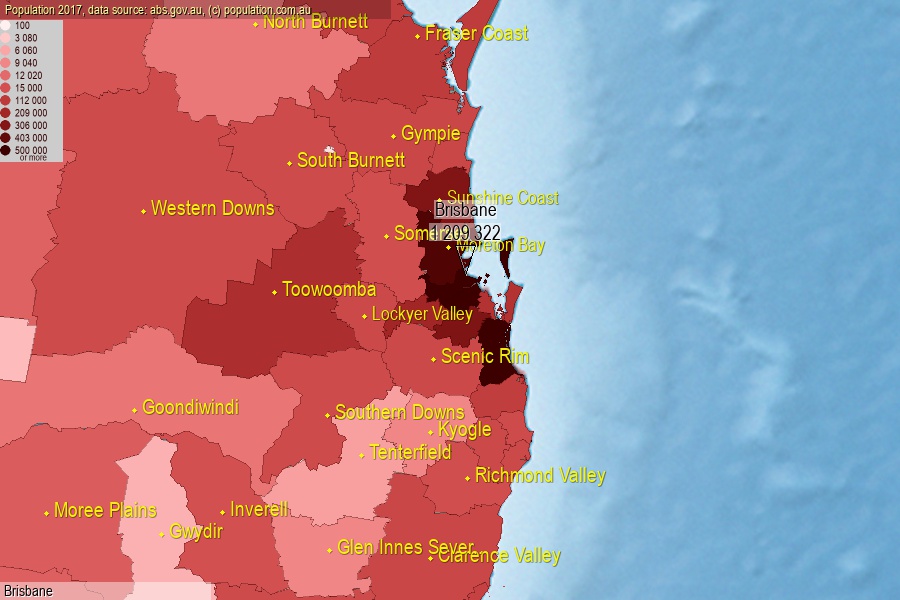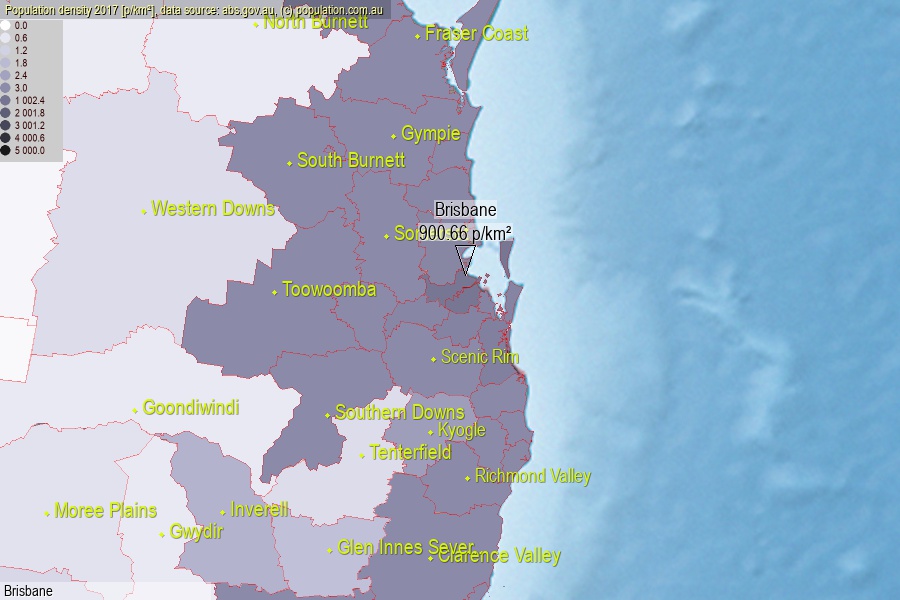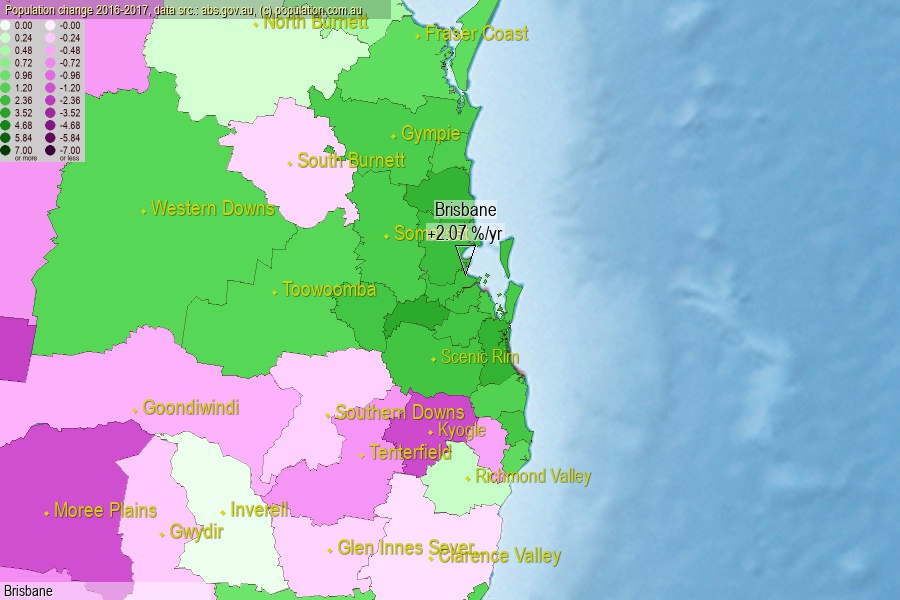 population.com.au
population.com.auLast official estimated population of Brisbane City (as Local Government Area) was 1 209 322 people (on 2017-06-30)[2]. This was 4.88% of total Australian population and 24.232% of QLD population. Area of Brisbane is 1 342.70 km², in this year population density was 900.66 p/km² . If population growth rate would be same as in period 2016-2017 (+2.07%/yr), Brisbane population in 2025 would be 1 425 141. [0]



Click to enlarge. Brisbane is located in the center of the images.
Population [people], population density [p./km²] and population change [%/year] [2]
[1996-2001] +1.44 %/Y
[2001-2002] +2.54 %/Y
[2002-2003] +2.45 %/Y
[2003-2004] +2.08 %/Y
[2004-2005] +1.90 %/Y
[2005-2006] +2.05 %/Y
[2006-2007] +2.27 %/Y
[2007-2008] +2.30 %/Y
[2008-2009] +2.34 %/Y
[2009-2010] +1.46 %/Y
[2010-2011] +1.56 %/Y
[2011-2012] +2.01 %/Y
[2012-2013] +1.82 %/Y
[2013-2014] +1.51 %/Y
[2014-2015] +1.42 %/Y
[2015-2016] +1.66 %/Y
[2016-2017] +2.07 %/Y
[0] Calculated with linear interpolation from officially estimated population
[1] Read more about LGA and Australian Statistical Geography Standard (ASGS) on abs.gov.au
[2] Population data from Australian Bureau of Statistics (Population and density: 2017; change: 2016-2017)
[3] Digital Boundaries: Australian Statistical Geography Standard (ASGS) 2016.